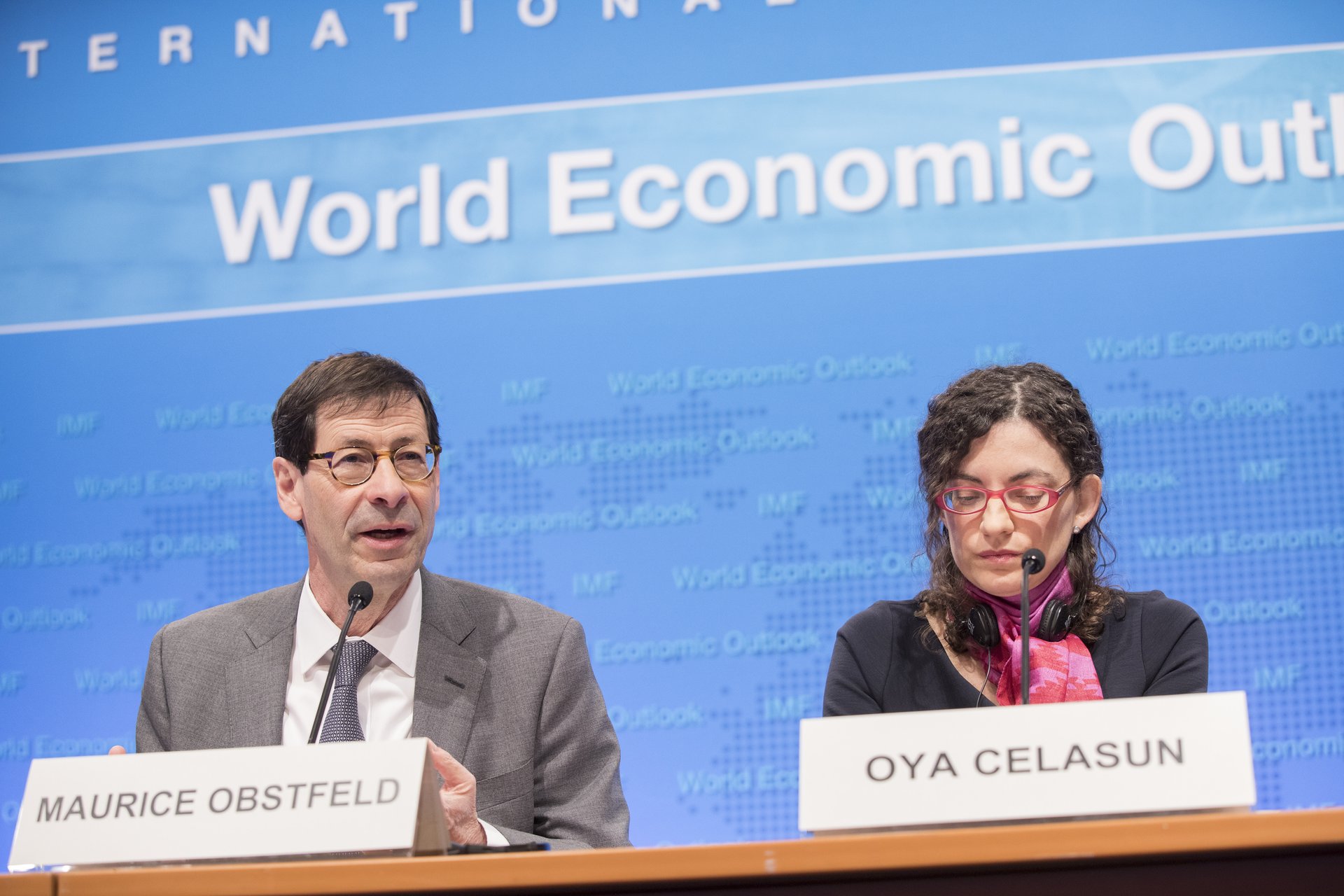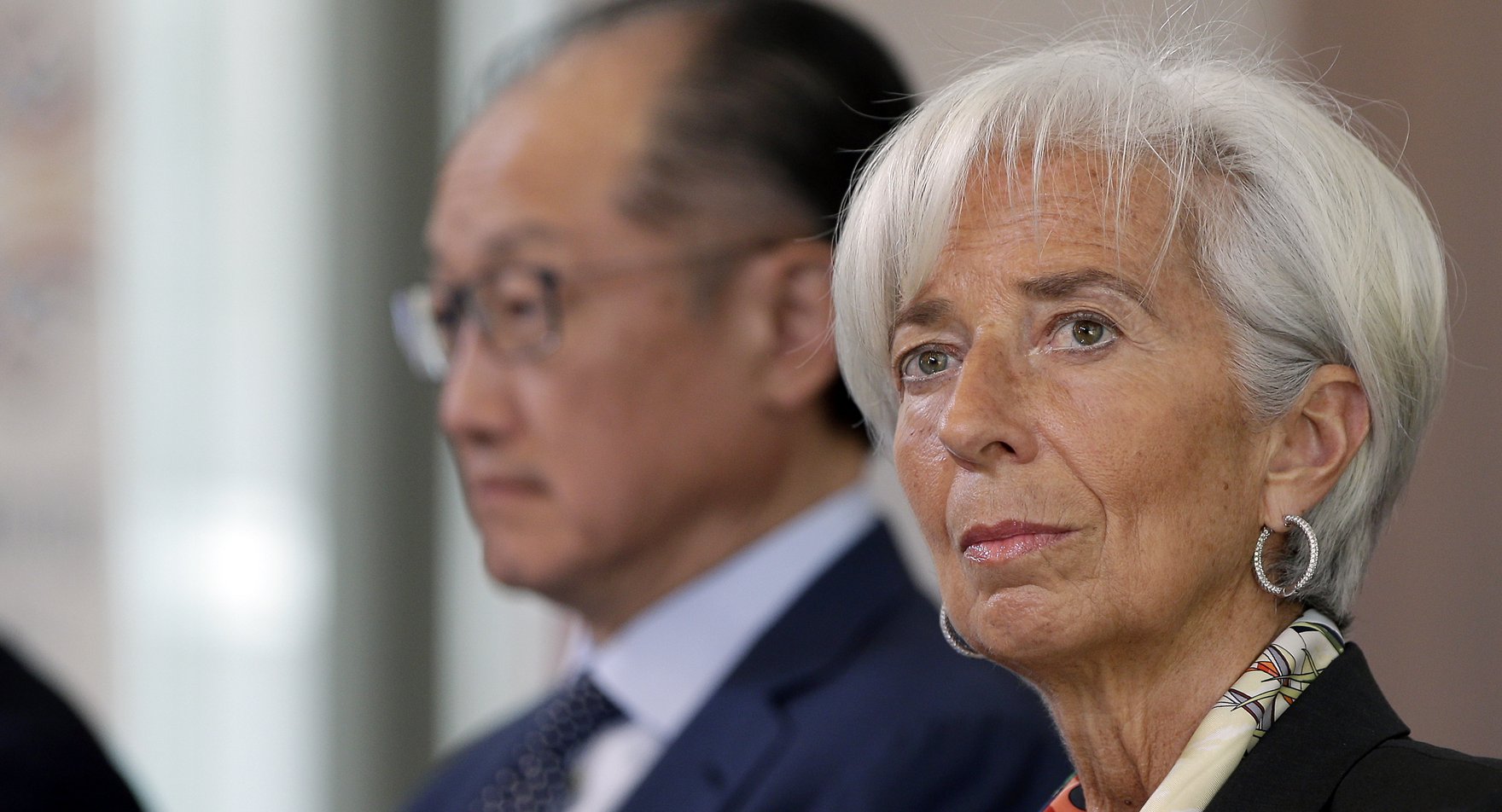Christine Lagarde faces a huge challenge. Lagarde is the highly respected managing director of the International Monetary Fund (IMF) who, along with World Bank President Jim Yong Kim, hosts the spring meetings of the IMF and World Bank this week in Washington, DC. No, the problem she confronts is not the threat of an imminent financial crisis and global recession on the order of 2007-2008. In fact, the prospects for the global economy have brightened in recent months, with IMF’s World Economic Outlook released on Tuesday forecasting growth of 3.5 percent in 2017, higher than in its previous forecast.
Lagarde’s challenge can be summed up in one word — governance. And, in some respects, it may be the biggest challenge that any IMF managing director has had to deal with since the institution was created more than 70 years ago. A little history is helpful.
In the midst of World War II, US and UK officials conceived the IMF and its sister institution, the World Bank, as a way of promoting postwar prosperity for victor and vanquished nations alike. For the Americans, the road to war had been paved by the spread of bilateral trade arrangements, which entailed state controls on raw materials, import quotas to conserve foreign exchange and long-term commodity agreements that allowed purchasers to monopolize overseas sources of strategic materials. These agreements led countries to view the global economy as a zero-sum game in which one country benefited at another’s expense. In turn, this perspective likely undermined international cooperation and weakened the resolve of democratic nations to halt fascist aggression.
Preferential trading arrangements between groups of countries were a particular irritant to the United States. This included the Imperial Preference System negotiated in Ottawa in 1932, which linked together the United Kingdom, her overseas colonies and the self-governing dominions of the Commonwealth in a sterling-based trade area. The system provided for low tariffs and convertibility of sterling balances between members but maintained restrictions against other currencies, including the US dollar. Not surprisingly, the Americans were determined to eliminate such impediments to open, transparent trade. British officials resisted, knowing that at war’s end Britain would be heavily indebted, its foreign exchange reserves exhausted, much of its overseas investments liquidated, and British industry, unable to import raw materials, would be incapable of generating export earnings. Lacking the necessary financial resources to finance imports, they feared, the United Kingdom would not be able to trade with the United States under any trading system — whether open and transparent, or restricted and opaque. The United Kingdom was not alone.
The institutions created at Bretton Woods, New Hampshire, in 1944 were designed to address this problem. The IMF, it was agreed, would ease the financial constraints that threatened to strangle world trade and hobble postwar growth. By making dollars available on terms that would not require democratically elected governments to impose draconian adjustment on their populations, the IMF would create an environment conducive to the lowering of trade barriers and multilateralism. Meanwhile, the World Bank — its official title, the International Bank for Reconstruction and Development — would lend to governments rebuilding infrastructure destroyed by hostilities. Without roads, bridges and ports, raw materials could not get to the factory floor; finished products could not be shipped to markets. Mass unemployment would result.
Negotiations between Harry Dexter White, representing the US Treasury, and John Maynard Keynes, who advised the UK government, were at times marked by heated debates and bitter recriminations. Their argument centred on the balance between financing and adjustment that the system would provide those members in need of balance of payments support. In hindsight, most economic historians probably agree that Keynes had the better plan but lacked the financial backing needed to put into effect. As a puckish aphorism circulating at the time put it: “Pity poor Keynes, the U.S. has all the cash, whilst the British have all the brains.” Soon, both men would be dead.
Had they survived, Keynes and White would likely have agreed that the Bretton Woods system generally worked as planned. In the process, it transformed the way in which governments viewed the global economy. Progressive rounds of trade liberalization, conducted initially under the General Agreement on Tariffs and Trade and, subsequently, the World Trade Organization, lowered tariffs and provided an environment in which trade disputes were mediated; members eschewed the bilateral arrangements that had a corrosive effect on international relations in the 1930s. From the zero-sum perspective of the 1930s, nations came to see the global economy as a positive-sum game in which all members who adhere to the rules of the game can grow and prosper. In a very real sense, the system justified the idealism of its founders as the means by which individual nations could better the lives of their citizens by working cooperatively with other nations.
The Bretton Woods system wasn’t perfect, however, and it took time to get up and running. The first IMF assistance program approved in 1947 was for France, appropriately enough, given Christine Lagarde’s provenance. Regardless, 70 years after that first IMF program, White and Keynes, whose busts hover over the managing director in the IMF’s executive boardroom, would be astonished at the challenge that now confronts her.
For the past seven decades, successive US administrations have supported multilateralism as an article of faith. The Bretton Woods system recognized US financial dominance at the close of World War II by giving the US dollar a special role — some argued “exorbitant privilege” — in exchange rate arrangements. At the same time, IMF governance arrangements gave the United States a de facto veto over changes to the IMF’s articles of agreement. As a consequence of these measures, the United States wielded considerable influence over IMF programs and policies. All of this can be justified by economic and financial realities — the IMF is first and foremost a financial institution, albeit one with a political mission; 70 years ago the United States was the unquestioned economic and financial hegemon. In part, sustained US support reflected the view that working with others, and mobilizing the IMF, allowed Washington to leverage its substantial influence in support of financial, trade and economic, and strategic objectives.
But, seemingly, US commitment to multilateralism cannot be assumed. During the presidential campaign, Donald Trump presented a dystopian vision of the international trading system and the global economy — not one of a positive-sum game, but one in which the United States has been played for a sucker. His promise: to negotiate better trade deals bilaterally. And, while he walked back from a long-standing threat to name China a currency manipulator, his surrogates have continued to talk menacingly with respect to countries that have persistent trade surpluses with the United States. Their comments reflect a zero-sum perspective reminiscent of the 1930s. Indeed, IMF Chief Economist Maurice Obstfeld underlined on Tuesday that a "salient threat" to the global economy was a turn away from multilateralism and “towards protectionism, leading to trade warfare.”

For Christine Lagarde, the problem is that views such as the ones emanating from the new US administration are ultimately tied up with exchange rates. Policing exchange rates was a key role of the IMF in the Bretton Woods era. This responsibility reflected the fact that the effects of tariff reductions could be easily offset by exchange rate changes intended to gain an unfair competitive advantage. Apart from minor adjustments, countries could only change exchange rates in response to “fundamental disequilibrium” and with the approval of the IMF board. In the 1970s, the Bretton Woods “fixed but adjustable” system of exchange rates gave way to an à la carte approach in which member countries are free to pick the exchange rate arrangement of their choosing — pegging to another currency, entering a monetary union or adopting flexible exchange rate. Regardless of the arrangement selected, however, the IMF’s articles of agreement oblige all members to “promote exchange stability, to maintain orderly exchange arrangements among members, and to avoid competitive exchange depreciation.”
The purpose of IMF “surveillance” of members’ policies is to ensure that this condition is met. This is much harder to do in a world of integrated capital markets and flexible exchange rates compared to the halcyon days of the early Bretton Woods period. Consider an inflation-targeting central bank that reduces short-term interest rates, leading to a depreciation of the currency: what some may label currency manipulation could rightfully be considered well-timed monetary easing in response to the as-yet-unseen effects of an external shock. Sustained, one-sided foreign exchange intervention that results in the accumulation of foreign exchange reserves and mutes possible exchange rate appreciation might be cited as evidence of currency manipulation. But such intervention could also reflect prudent efforts to self-insure against financial crises and capital flight.
The point here is that just observing a policy action (easing monetary conditions or reserve accumulation) is insufficient to make a definite ruling on the intent of that action. Evaluating such measures requires careful consideration of the policy frameworks and stabilization objectives of the authorities, the state of economy and how it is likely to evolve over time, as well as the expected impact of exogenous shocks. Needless to say, this is not a trivial assignment. And it is not something that can be easily written into trade arrangements. Nevertheless, that may be the endgame of White House trade policies.
Embedding clauses in bilateral trade agreements that define and prescribe penalties in cases of currency manipulation could prove to be disruptive; governments facing trade deficits and domestic political pressures for protectionist measures are unlikely to be disinterested arbiters of the complex factors involved. The bigger the country, and the larger the market, the greater the leverage that can be applied to smaller trading partners. The danger is that the application of such clauses would undo the protections that smaller countries have against discrimination from bigger players with larger markets. While this outcome is not assured, it is possible that world trade could once again be drawn into regional trading blocs and preferential arrangements that would validate the zero-sum perspective.
All of this underscores the importance of the IMF as disinterested adjudicator of exchange rates. Its past performance in this regard has been subject to criticism; the IMF may have been too timid in calling out possible cases of manipulation or, equally, too deferential in its criticism of the policies of its largest members that contributed to sustained current account deficits. This militates for strengthening the effectiveness of the IMF’s surveillance and securing agreement on effective instruments that it can employ to bring members’ policies into line with their responsibilities and obligations to each other.
And, this is Christine Lagarde’s challenge. Getting the agreement necessary to reinvigorate the IMF’s role in exchange rate surveillance and to sustain international trade and the global economy as the wellsprings of prosperity for people around the globe will require the concerted efforts of all its members. Yet, if the largest member wielding a veto over major changes no longer subscribes to the vision and objectives the IMF was created to advance, how likely is it that other countries — which have voiced frustrations of asymmetric treatment and a governance structure that reflects the global economy of the mid-twentieth century, rather than the early twenty-first century — will play ball?



